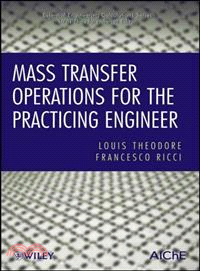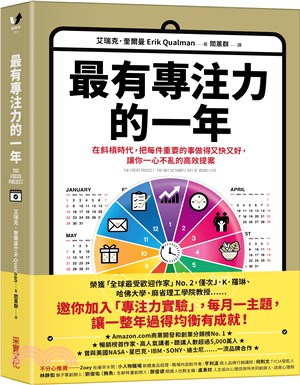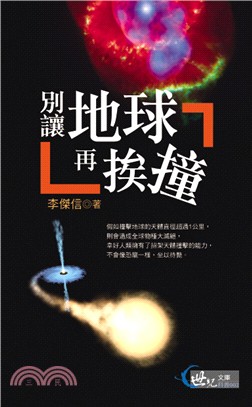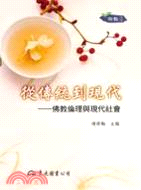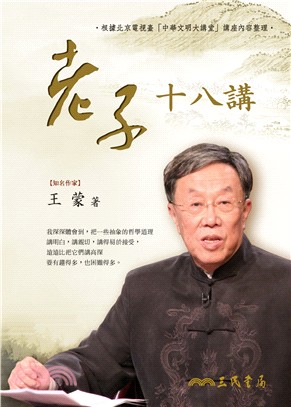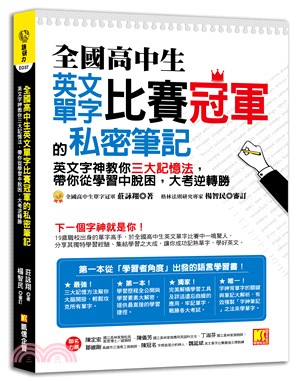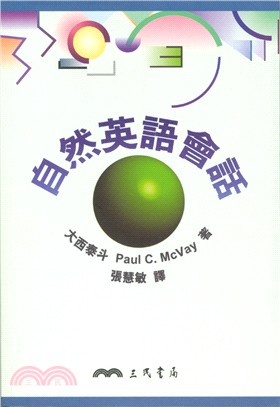Mass Transfer Operations For The Practicing Engineer
商品資訊
定價
:NT$ 9178 元優惠價
:90 折 8260 元
若需訂購本書,請電洽客服 02-25006600[分機130、131]。
相關商品
商品簡介
作者簡介
目次
商品簡介
An invaluable guide for problem solving in mass transfer operations
This book takes a highly pragmatic approach to providing the principles and applications of mass transfer operations by offering a valuable, easily accessible guide to solving engineering problems. Both traditional and novel mass transfer processes receive treatment. As with all of the books in this series, emphasis is placed on an example-based approach to illustrating key engineering concepts.
The book is divided into two major parts. It starts with the principles underlying engineering problems—showing readers how to apply general engineering principles to the topic of mass transfer operations. It then goes on to provide step-by-step guidance for traditional mass transfer operations, including distillation, absorption and stripping, and adsorption, plus novel mass transfer processes. Essential topics for professional engineering exams are also covered.
Geared towards chemical, environmental, civil, and mechanical engineers working on real-world industrial applications, Mass Transfer Operations for the Practicing Engineer features:
Numerous sample problems and solutions with real-world applications
Clear, precise explanations on how to carry out the basic calculations associated with mass transfer operations
Coverage of topics from the ground up for readers without prior knowledge of the subject
Overview of topics relevant to the ABET (Accreditation Board for Engineering and Technology) for those taking the Professional Engineering (PE) exams
Appendix containing relevant mass transfer operation charts and tables
This book takes a highly pragmatic approach to providing the principles and applications of mass transfer operations by offering a valuable, easily accessible guide to solving engineering problems. Both traditional and novel mass transfer processes receive treatment. As with all of the books in this series, emphasis is placed on an example-based approach to illustrating key engineering concepts.
The book is divided into two major parts. It starts with the principles underlying engineering problems—showing readers how to apply general engineering principles to the topic of mass transfer operations. It then goes on to provide step-by-step guidance for traditional mass transfer operations, including distillation, absorption and stripping, and adsorption, plus novel mass transfer processes. Essential topics for professional engineering exams are also covered.
Geared towards chemical, environmental, civil, and mechanical engineers working on real-world industrial applications, Mass Transfer Operations for the Practicing Engineer features:
Numerous sample problems and solutions with real-world applications
Clear, precise explanations on how to carry out the basic calculations associated with mass transfer operations
Coverage of topics from the ground up for readers without prior knowledge of the subject
Overview of topics relevant to the ABET (Accreditation Board for Engineering and Technology) for those taking the Professional Engineering (PE) exams
Appendix containing relevant mass transfer operation charts and tables
作者簡介
LOUIS THEODORE, ENG SCD, is a professor in the Chemical Engineering Department at Manhattan College in Bronx, New York, and the recipient of the prestigious Ripperton Award from the International Air and Waste Management Association's and the American Society for Engineering Education's AT&T Foundation Award for "excellence in the instruction of engineering students." Professor Theodore is a contributor to Perry's Chemical Engineers' Handbook, the coeditor of Handbook of Chemical and Environmental Engineering Calculations (Wiley), the coauthor of Thermodynamics for the Practicing Engineer (Wiley), and the author of Fluid Flow for the Practicing Chemical Engineer and Air Pollution Control Equipment Calculations, also from Wiley.
FRANCESCO RICCI is the recipient of numerous academic awards and scholarships. Aside from academic research, Mr. Ricci's industrial experience includes short tenures at Air Products and Chemicals, Inc. and Bristol-Myers Squibb. He has lectured at the undergraduate level on chemical engineering thermodynamics as well as on reactor design. Mr. Ricci is the coauthor of Thermodynamics for the Practicing Engineer (Wiley), the author of the solutions manual for said text, and a contributing author to the 2009 title Introduction to Environmental Management.
FRANCESCO RICCI is the recipient of numerous academic awards and scholarships. Aside from academic research, Mr. Ricci's industrial experience includes short tenures at Air Products and Chemicals, Inc. and Bristol-Myers Squibb. He has lectured at the undergraduate level on chemical engineering thermodynamics as well as on reactor design. Mr. Ricci is the coauthor of Thermodynamics for the Practicing Engineer (Wiley), the author of the solutions manual for said text, and a contributing author to the 2009 title Introduction to Environmental Management.
目次
Preface.
Part One Introduction.
1. History of Chemical Engineering and Mass Transfer Operations.
References.
2. Transport Phenomena vs Unit Operations Approach.
References.
3. Basic Calculations.
Introduction.
Units and Dimensions.
Conversion of Units.
The Gravitational Constant gc.
Significant Figures and Scientific Notation.
References.
4. Process Variables.
Introduction.
Temperature.
Pressure.
Moles and Molecular Weight.
Mass, Volume, and Density.
Viscosity.
Reynolds Number.
pH.
Vapor Pressure.
Ideal Gas Law.
References.
5. Equilibrium vs Rate Considerations.
Introduction.
Equilibrium.
Rate.
Chemical Reactions.
References.
6. Phase Equilibrium Principles.
Introduction.
Gibb’s Phase Rule.
Raoult’s Law.
Henry’s Law.
Raoult’s Law vs Henry’s Law.
Vapor-Liquid Equilibrium in Nonideal Solutions.
Vapor-Solid Equilibrium.
Liquid-Solid Equilibrium.
References.
7. Rate Principles.
Introduction.
The Operating Line.
Fick’s Law.
Diffusion in Gases.
Diffusion in Liquids.
Mass Transfer Coefficients.
Individual Mass Transfer Coefficients.
Equimolar Counterdiffusion.
Diffusion of Component A Through Non-diffusing Component B.
Overall Mass Transfer Coefficients.
Equimolar Counterdiffusion and/or Diffusion in Dilute Solutions.
Gas Phase Resistance Controlling.
Liquid Phase Resistance Controlling.
Experimental Mass Transfer Coefficients.
References.
Part Two Applications: Component and Phase Separation Processes.
8. Introduction to Mass Transfer Operations.
Introduction.
Classification of Mass Transfer Operations.
Contact of Immiscible Phases.
Miscible Phases Separated by a Membrane.
Direct Contact of Miscible Phases.
Mass Transfer Equipment.
Distillation.
Absorption.
Adsorption.
Extraction.
Humidification and Drying.
Other Mass Transfer Unit Operations.
The Selection Decision.
Characteristics of Mass Transfer Operations.
Unsteady-State vs Steady-State Operation.
Flow Pattern.
Stagewise vs Continuous Operation.
References.
9. Distillation.
Introduction.
Flash Distillation.
Batch Distillation.
Continuous Distillation with Reflux.
Equipment and Operation.
Equilibrium Considerations.
Binary Distillation Design: McCabe-Thiele Graphical Method.
Multicomponent Distillation: Fenske-Underwood-Gilliland (FUG) Method.
Packed Column Distillation.
References.
10. Absorption and Stripping.
Introduction.
Description of Equipment.
Packed Columns.
Plate Columns.
Design and Performance Equations?Packed Columns.
Liquid Rate.
Column Diameter.
Column Height.
Pressure Drop.
Design and Performance Equations-Plate Columns.
Stripping.
Packed vs Plate Tower Comparison.
Summary of Key Equations.
References.
11. Adsorption.
Introduction.
Adsorption Classification.
Activated Carbon.
Activated Alumina.
Silica Gel.
Molecular Sieves.
Adsorption Equilibria.
Freundlich Equation.
Langmuir Isotherms.
Description of Equipment.
Design and Performance Equations.
Regeneration.
References.
12. Liquid-Liquid and Solid-Liquid Extraction.
Introduction.
Liquid-Liquid Extraction.
The Extraction Process.
Equipment.
Solvent Selection.
Equilibrium.
Graphical Procedures.
Analytical Procedures.
Solid-Liquid Extraction (Leaching).
Process Variables.
Equipment and Operation.
Design and Predictive Equations.
References.
13. Humidification and Drying.
Introduction.
Psychrometry and the Psychrometric Chart.
Humidification.
Equipment.
Describing Equations.
Drying.
Rotary Dryers.
Spray Dryers.
References.
14. Crystallization.
Introduction.
Phase Diagrams.
The Crystallization Process.
Crystal Physical Characteristics.
Equipment.
Describing Equations.
Design Considerations.
References.
15. Membrane Separation Processes.
Introduction.
Reverse Osmosis.
Describing Equations.
Ultrafiltration.
Describing Equations.
Microfiltration.
Describing Equations.
Gas Permeation.
Describing Equations.
References.
16. Phase Separation Equipment.
Introduction.
Fluid-Particle Dynamics.
Gas-Solid (G-S) Equipment.
Gravity Settlers.
Cyclones.
Electrostatic Precipitators.
Venturi Scrubbers.
Baghouses.
Gas-Liquid (G-L) Equipment.
Liquid-Solid (L-S) Equipment.
Sedimentation.
Centrifugation.
Flotation.
Liquid-Liquid (L-L) Equipment.
Solid-Solid (S?S) Equipment.
High-Gradient Magnetic Separation.
Solidification.
References.
Part Three Other Topics.
17. Other and Novel Separation Processes.
Freeze Crystallization.
Ion Exchange.
Liquid Ion Exchange.
Resin Adsorption.
Evaporation.
Foam Fractionation.
Dissociation Extraction.
Electrophoresis.
Vibrating Screens.
References.
18. Economics and Finance.
Introduction.
The Need for Economic Analyses.
Definitions.
Simple Interest.
Compound Interest.
Present Worth.
Evaluation of Sums of Money.
Depreciation.
Fabricated Equipment Cost Index.
Capital Recovery Factor.
Present Net Worth.
Perpetual Life.
Break-Even Point.
Approximate Rate of Return.
Exact Rate of Return.
Bonds.
Incremental Cost.
Principles of Accounting.
Applications.
References.
19. Numerical Methods.
Introduction.
Applications.
References.
20. Open-Ended Problems.
Introduction.
Developing Students’ Power of Critical Thinking.
Creativity.
Brainstorming.
Inquiring Minds.
Failure, Uncertainty, Success: Are They Related?
Angels on a Pin.
Applications.
References.
21. Ethics.
Introduction.
Teaching Ethics.
Case Study Approach.
Integrity.
Moral Issues.
Guardianship.
Engineering and Environmental Ethics.
Future Trends.
Applications.
References.
22. Environmental Management and Safety Issues.
Introduction.
Environmental Issues of Concern.
Health Risk Assessment.
Risk Evaluation Process for Health.
Hazard Risk Assessment.
Risk Evaluation Process for Accidents.
Applications.
References.
Appendix.
Appendix A. Units.
A.1 The Metric System.
A.2 The SI System.
A.3 Seven Base Units.
A.4 Two Supplementary Units.
A.5 SI Multiples and Prefixes.
A.6 Conversion Constants (SI).
A.7 Selected Common Abbreviations.
Appendix B. Miscellaneous Tables.
Appendix C. Steam Tables.
Index.
Part One Introduction.
1. History of Chemical Engineering and Mass Transfer Operations.
References.
2. Transport Phenomena vs Unit Operations Approach.
References.
3. Basic Calculations.
Introduction.
Units and Dimensions.
Conversion of Units.
The Gravitational Constant gc.
Significant Figures and Scientific Notation.
References.
4. Process Variables.
Introduction.
Temperature.
Pressure.
Moles and Molecular Weight.
Mass, Volume, and Density.
Viscosity.
Reynolds Number.
pH.
Vapor Pressure.
Ideal Gas Law.
References.
5. Equilibrium vs Rate Considerations.
Introduction.
Equilibrium.
Rate.
Chemical Reactions.
References.
6. Phase Equilibrium Principles.
Introduction.
Gibb’s Phase Rule.
Raoult’s Law.
Henry’s Law.
Raoult’s Law vs Henry’s Law.
Vapor-Liquid Equilibrium in Nonideal Solutions.
Vapor-Solid Equilibrium.
Liquid-Solid Equilibrium.
References.
7. Rate Principles.
Introduction.
The Operating Line.
Fick’s Law.
Diffusion in Gases.
Diffusion in Liquids.
Mass Transfer Coefficients.
Individual Mass Transfer Coefficients.
Equimolar Counterdiffusion.
Diffusion of Component A Through Non-diffusing Component B.
Overall Mass Transfer Coefficients.
Equimolar Counterdiffusion and/or Diffusion in Dilute Solutions.
Gas Phase Resistance Controlling.
Liquid Phase Resistance Controlling.
Experimental Mass Transfer Coefficients.
References.
Part Two Applications: Component and Phase Separation Processes.
8. Introduction to Mass Transfer Operations.
Introduction.
Classification of Mass Transfer Operations.
Contact of Immiscible Phases.
Miscible Phases Separated by a Membrane.
Direct Contact of Miscible Phases.
Mass Transfer Equipment.
Distillation.
Absorption.
Adsorption.
Extraction.
Humidification and Drying.
Other Mass Transfer Unit Operations.
The Selection Decision.
Characteristics of Mass Transfer Operations.
Unsteady-State vs Steady-State Operation.
Flow Pattern.
Stagewise vs Continuous Operation.
References.
9. Distillation.
Introduction.
Flash Distillation.
Batch Distillation.
Continuous Distillation with Reflux.
Equipment and Operation.
Equilibrium Considerations.
Binary Distillation Design: McCabe-Thiele Graphical Method.
Multicomponent Distillation: Fenske-Underwood-Gilliland (FUG) Method.
Packed Column Distillation.
References.
10. Absorption and Stripping.
Introduction.
Description of Equipment.
Packed Columns.
Plate Columns.
Design and Performance Equations?Packed Columns.
Liquid Rate.
Column Diameter.
Column Height.
Pressure Drop.
Design and Performance Equations-Plate Columns.
Stripping.
Packed vs Plate Tower Comparison.
Summary of Key Equations.
References.
11. Adsorption.
Introduction.
Adsorption Classification.
Activated Carbon.
Activated Alumina.
Silica Gel.
Molecular Sieves.
Adsorption Equilibria.
Freundlich Equation.
Langmuir Isotherms.
Description of Equipment.
Design and Performance Equations.
Regeneration.
References.
12. Liquid-Liquid and Solid-Liquid Extraction.
Introduction.
Liquid-Liquid Extraction.
The Extraction Process.
Equipment.
Solvent Selection.
Equilibrium.
Graphical Procedures.
Analytical Procedures.
Solid-Liquid Extraction (Leaching).
Process Variables.
Equipment and Operation.
Design and Predictive Equations.
References.
13. Humidification and Drying.
Introduction.
Psychrometry and the Psychrometric Chart.
Humidification.
Equipment.
Describing Equations.
Drying.
Rotary Dryers.
Spray Dryers.
References.
14. Crystallization.
Introduction.
Phase Diagrams.
The Crystallization Process.
Crystal Physical Characteristics.
Equipment.
Describing Equations.
Design Considerations.
References.
15. Membrane Separation Processes.
Introduction.
Reverse Osmosis.
Describing Equations.
Ultrafiltration.
Describing Equations.
Microfiltration.
Describing Equations.
Gas Permeation.
Describing Equations.
References.
16. Phase Separation Equipment.
Introduction.
Fluid-Particle Dynamics.
Gas-Solid (G-S) Equipment.
Gravity Settlers.
Cyclones.
Electrostatic Precipitators.
Venturi Scrubbers.
Baghouses.
Gas-Liquid (G-L) Equipment.
Liquid-Solid (L-S) Equipment.
Sedimentation.
Centrifugation.
Flotation.
Liquid-Liquid (L-L) Equipment.
Solid-Solid (S?S) Equipment.
High-Gradient Magnetic Separation.
Solidification.
References.
Part Three Other Topics.
17. Other and Novel Separation Processes.
Freeze Crystallization.
Ion Exchange.
Liquid Ion Exchange.
Resin Adsorption.
Evaporation.
Foam Fractionation.
Dissociation Extraction.
Electrophoresis.
Vibrating Screens.
References.
18. Economics and Finance.
Introduction.
The Need for Economic Analyses.
Definitions.
Simple Interest.
Compound Interest.
Present Worth.
Evaluation of Sums of Money.
Depreciation.
Fabricated Equipment Cost Index.
Capital Recovery Factor.
Present Net Worth.
Perpetual Life.
Break-Even Point.
Approximate Rate of Return.
Exact Rate of Return.
Bonds.
Incremental Cost.
Principles of Accounting.
Applications.
References.
19. Numerical Methods.
Introduction.
Applications.
References.
20. Open-Ended Problems.
Introduction.
Developing Students’ Power of Critical Thinking.
Creativity.
Brainstorming.
Inquiring Minds.
Failure, Uncertainty, Success: Are They Related?
Angels on a Pin.
Applications.
References.
21. Ethics.
Introduction.
Teaching Ethics.
Case Study Approach.
Integrity.
Moral Issues.
Guardianship.
Engineering and Environmental Ethics.
Future Trends.
Applications.
References.
22. Environmental Management and Safety Issues.
Introduction.
Environmental Issues of Concern.
Health Risk Assessment.
Risk Evaluation Process for Health.
Hazard Risk Assessment.
Risk Evaluation Process for Accidents.
Applications.
References.
Appendix.
Appendix A. Units.
A.1 The Metric System.
A.2 The SI System.
A.3 Seven Base Units.
A.4 Two Supplementary Units.
A.5 SI Multiples and Prefixes.
A.6 Conversion Constants (SI).
A.7 Selected Common Abbreviations.
Appendix B. Miscellaneous Tables.
Appendix C. Steam Tables.
Index.
主題書展
更多
主題書展
更多書展本週66折
您曾經瀏覽過的商品
購物須知
外文書商品之書封,為出版社提供之樣本。實際出貨商品,以出版社所提供之現有版本為主。部份書籍,因出版社供應狀況特殊,匯率將依實際狀況做調整。
無庫存之商品,在您完成訂單程序之後,將以空運的方式為你下單調貨。為了縮短等待的時間,建議您將外文書與其他商品分開下單,以獲得最快的取貨速度,平均調貨時間為1~2個月。
為了保護您的權益,「三民網路書店」提供會員七日商品鑑賞期(收到商品為起始日)。
若要辦理退貨,請在商品鑑賞期內寄回,且商品必須是全新狀態與完整包裝(商品、附件、發票、隨貨贈品等)否則恕不接受退貨。



